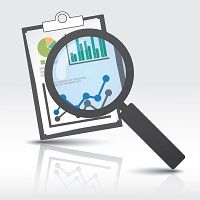Article
Weaknesses Identified in Infectious Disease Prediction Models
Author(s):
Looking at several infectious diseases, including Ebola, University of Michigan researchers determined many modeling techniques overestimate which and how many people will be affected by a given outbreak. To avoid this issue, the team offered alternative methods that could accurately foresee the trajectory of infectious disease outbreaks.

Looking at several infectious diseases, including Ebola, University of Michigan (U-M) researchers determined many modeling techniques overestimate which and how many people will be affected by a given outbreak. To avoid this issue, the team offered alternative methods that could accurately foresee the trajectory of infectious disease outbreaks.
Published online on March 31 in the Proceedings of the Royal Society B, investigators endorsed the use of stochastic models, a method which considers randomness and effectively reflects uncertainty at the early stages of an outbreak.
“Because stochastic models with greater realism, flexibility and transparency can be routinely and straightforwardly fit to outbreak data, there is less and less scope for older, less reliable and more opaque methods, “the authors wrote.
Specifically, scholars advised against the use of deterministic models as they don’t weigh and reflect unpredictable and random factors such as how many people are infected per transmission event.
“Deterministic models are easier and faster to work with, and the results look really good,” the study’s contributor, Aaron King, an associate professor in the U-M Department of Ecology and Evolutionary Biology said in a U-M news release. “But when you use them, it's a double whammy. Not only are you wrong, you are very sure that you are right.”
Using Ebola as an example, the team claimed deterministic models were used to forecast the spread of Ebola. While the US Centers for Disease Control (CDC) and Prevention estimated last September that there would be 1.4 million Ebola cases in Liberia and Sierra Leone by January 2015, World Health Organization (WHO) reported on March 23 there were only 24,842 Ebola cases in those regions, the statement also pointed out.
“In particular, the practices of fitting deterministic models and fitting models to cumulative case report data are prejudicial to accuracy and can no longer be justified on pragmatic grounds,” the authors determined.


